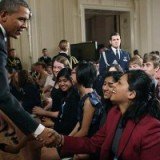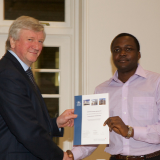AI Superpowers (2018) Book Summary and Insights
Book Title: AI Superpowers
Subtitle: China, Silicon Valley, and the New World Order
Publication Date: 2018
Author Name: Kai-Fu Lee
Book Summary
Artificial Intelligence continues to apply itself in all aspects of our everyday lives. This book AI Superpowers details the history of Artificial Intelligence in both China and the United States. It makes an in-depth analysis on each country’s approach to Artificial Intelligence. It details the development of Artificial Intelligence and the significant advantage China has to lead in the industry over the United States. This advantage comes from China’s increasing investment in Artificial Intelligence. The book author believes that China will eventually lead in implementation of Artificial Intelligence, with the United States as a close second. The Chinese Government makes it a priority because it sees it as a means to increase world power and spread its culture. This book also details the development waves of Artificial Intelligence. To find out more on the author’s views, please read the following insights.
Who Is This Book For?
This book is for futurists, economists, and technologists, those who want to understand Artificial Intelligence and its rising dominance in the world. It is for those who want to understand the capabilities of Artificial Intelligence and its imminent impact on geopolitical system, job market and human society.
About The Author
KAI-FU LEE is a venture capitalist, former CEO of Google China, and ranked by Forbes as #1 among the leaders of China’s AI revolution, a graduate of Columbia University and received his doctorate from Carnegie Mellon. He is chairman and CEO of Sinovation Ventures.
Buy Book: Support The Book Author And Our Work
Great books should be read, studied, and reviewed frequently, so reading the actual book may provide more value to you than the book insights on this page. Besides, this would support the work of the book author and what we do on LarnEdu. What could be better?
Important Notes
We get a small compensation from Amazon when you visit your nearest/local Amazon site via our affiliate link to purchase an item within 24 hours or if you add it to your cart and checkout within 90 days. This is no additional cost to you and supports our work.
The information on this page is meant to supplement the actual book(it is not a book review but distils the key insights or ideas from the book in under 5000 words). The content creator or LarnEdu does not necessarily support the views, thoughts, and opinions expressed in the text/book. Reasonable skepticism should be applied with any views, thoughts or opinions expressed/shared by the book author or content creator.
Reading the contents of this page does not guarantee specific results. The best lessons are achieved from taking consistent action in the real world rather than being addicted to the illusion of progress by getting stuck on reading an infinite amount of books or book summaries and insights. LarnEdu and the content creator accepts no responsibility or liability for the accuracy of the information on this page or how it is used.
Book Insights

Deep Learning and Data
The revolution of Artificial Intelligence has been brewing for decades now and with the breakthrough in the development of deep learning, that revolution has finally arrived. Deep learning stretches back to the mid-1950s when the pioneers of artificial intelligence set themselves a mission to recreate human intelligence in a machine. The author mentions that at the start of his research involvement in artificial intelligence, there was a division of two camps: the ‘rule-based’ approach and the ‘neural networks’ approach. The rule-based approach involved teaching computers to think by encoding a series of logical rules whereas the neural approach did not involve giving the networks rules to follow in decision making. Instead, the neural approach involved feeding the networks lots of examples and letting the networks themselves identify patterns within the data. This neural network approach was eventually rebranded as deep learning. This invention of deep learning shows a shift from the age of expertise to the age of data. The power of deep learning requires data as its core in this age of implementation. There is no data like more data in deep learning. The author explains that the more we expose a network to examples of an idea, the more it can accurately pick out and identify things in the real world. This arrival of deep learning provided machines with superhuman abilities ranging from voice or visual recognition, spotting patterns in data, and decision making.
Copycats to Top Contenders
China was at a time seen as a land of copycat companies while the only technological cutting edge was Silicon Valley. An example is Wang Xing who took America’s hottest startup of then and copied it for Chinese users. The elites of Silicon Valley believed this sheer copying would prevent China from building innovative technologies. What they did not see was that this copying was a necessary steppingstone to the creation of more original and locally tailored technological products. In The United States the engineering know-how and design needed to create world-class technological products are passed down through education, mentorship, internship and inspiration. China however did not have the provision of all these, so instead they copied the products as best as they could. Although crude as the process appeared it taught these copycats the basics in technological development. And in trying to beat not just the Silicon Valley inventors but also other similar copycats, they improved and localized their products to better serve their customers. Just like Wang Xing’s copycat transformation, it paints a picture of the evolution of China’s technological system and its tenacious entrepreneurs.
Unique Internet World
The author describes the divide between Silicon Valley and China in this age of artificial intelligence implementation as ‘going light’ versus ‘going heavy’. These are basically what show how involved an internet company is in providing goods or services. They’re a representation of the extent of vertical integration a company links up to the online and offline worlds. In taking the light approach, the companies merely works on one part and leaves the other details surrounding that service or product for others to take care of. The companies in Silicon Valley adopt this approach. Companies in China go heavy. They prefer to handle all aspects of the development of a service thereby building a wall around their businesses. Hence, making it difficult for a copycat startup to duplicate the service. This approach of controlling all aspect of production of the service, the heavy approach makes for the creation of more data which is very essential to the development of a good Artificial Intelligence Product. The author makes examples of this heavy approach with Uber and its Chinese equivalent Didi. He stated that this approach created a data environment. Going heavy gives companies a data edge over their light contemporaries.
China and the First and Second AI Waves
The revolution of artificial intelligence into our daily lives will come in a series of four waves. Each of these will harness the power of artificial intelligence in different ways and into different sectors. These four waves feed off different data and each gives an opportunity for either the United States or China to take the lead. The first two waves being the Internet AI and the business AI is already around us and reshaping our digital and financial worlds. The first wave, internet AI is already here. It is largely about using AI algorithms as recommendation engines. We see this while watching YouTube videos. The algorithm used by YouTube to recommend the next video to watch. According to the author, China is most likely to take the lead in internet AI. He puts China at a 60-40 advantage in dominating the market. He bases this on the fact that China alone has more internet users than the United States and all of Europe combined. And that this larger population is more ready to make mobile payments to content creators. The second wave is the business AI, and it is in this category that the United States has more of an advantage. This is because the business AI takes advantage of quantities of data stored over a long period and the United States has an impeccable history of collecting large amounts of data and storing it in well-structured formats. This data could range from banking, hospital and business transactions. China has however not been able to embrace the standardized data storage. The author puts the United States at the lead of business AI with a 90-10 lead. He however believes that in a few years China would close the gap by 70-30.
The Third and Fourth AI Waves
Before the inception of artificial intelligence, machines merely reproduced audio and visual environments for humans to interpret. This however changed with the advent of perception AI. Algorithms can now group pictures and videos and recognize objects as well as pick up audio data. This perception AI is blurring the lines separating the online and offline worlds. This blend falls into the category of online-merge-offline (OMO). OMO makes up the full integration of the online and the offline worlds. It brings the convenience of the online world offline, and the reality of the offline world online. We can capture the application of OMO in perception AI-powered shopping trips. It can however go beyond shopping and be used to create a highly tailored experience in education. Asides video and digital data, perception AI is a hardware-heavy enterprise. There’s a need for an array of sensor-enabled hardware devices to sync up the online and offline worlds. Though Silicon Valley is great at software innovation, Shenzhen in China is at the forefront of hardware innovation. China is at an advantage of 60-40 in implementation of perception AI over the United States. This is because Americans do not want Big Brother or corporate America to know too much about what they are up to. The people in China however are more accepting with having their faces, voices captured and digitized. The author predicts that in a few years the 60-40 advantage will give way to a 80-20 chance. And this is because asides the Chinese people’s cultural acceptance about data privacy, their strength in hardware also gives them an advantage. The fourth and final wave is the autonomous AI. This represents the integration of the first three waves. The author notes that at this point the United States leads in implementing autonomous AI by 90-10. He believes China will even the odds in a few years’ time with its edge in hardware-intensive applications.
AI Crisis, Utopia, Dystopia
In debating the likely possibility of what an AI economy would look like, the intellectual community in this debate falls into two camps: utopia and dystopia. Those under the utopia camp view machines which can perform any intellectual task that a human can as a means to own consciousness and conquer mortality. These machines with intelligence comparable to humans are Artificial General Intelligence. They also believe the creation of these machines will help humans in solving problems like previously incurable diseases and provide solutions to global warming. Those under the dystopian camp believe that AI poses a very serious threat to humanity. Their fear is that if humans presented an obstacle to achieving one goal, for instance, to reverse global warming, then the machine could easily wipe humans off the face of the earth. Investigations into the impact of AI on jobs worry the author and many economists, technologists and futurists. Besides direct job losses, AI will worsen global economic inequality. Some people believe the fear of job losses is unfounded. The author however agrees with the report by PwC as against that of the OECD on the percentage of jobs in the United States that were at high risk of automation.
Coexistence with AI
The author spent his research career working to build powerful artificial intelligence algorithms and in doing that he started to view his life as a kind of optimization algorithm with clear set out goals. He began to minimize anything he felt did not contribute to the goals. In 2013, they diagnosed the author with stage IV lymphoma. And like so many people suddenly forced to face their own mortality he began to regret how he lived his life. He realized that he had ignored the opportunity to spend time and share love with those closest to him. Instead, he had focused on his quest to create machines. His cancer went into remission but the experience stuck with him and gave him a new vision on how artificial intelligence and humans can coexist together. The author believes there is an opportunity to use artificial intelligence to double down on what makes us human. According to the author, despite all of artificial intelligence’s capabilities, it still cannot provide the one thing humans can which is the most needed and that is love. He believes that we must build a shared future with artificial intelligence’s ability to think coupled with humans’ ability to love. To him, the creation of this synergy will let us harness the undeniable power of artificial intelligence to generate prosperity while also embracing our essential humanity. Irrespective of all these, the problem of AI-induced job losses remains. The many proposed solutions ranges from retraining workers, reducing work hours, or redistributing income.
Key Quotes
Here are some key quotes from the book:
“In deep learning, there’s no data like more data. The more examples of a given phenomenon a network is exposed to, the more accurately it can pick out patterns and identify things in the real world.” – Kai-Fu Lee, AI Superpowers: China, Silicon Valley, and the New World Order.
“AI will do the analytical thinking, while humans will wrap that analysis in warmth and compassion.” – Kai-Fu Lee, AI Superpowers: China, Silicon Valley, and the New World Order.
“Instead of being mission-driven, Chinese companies are first and foremost market-driven. Their ultimate goal is to make money, and they’re willing to create any product, adopt any model, or go into any business that will accomplish that objective.” – Kai-Fu Lee, AI Superpowers: China, Silicon Valley, and the New World Order.
Conclusion
Artificial Intelligence might replace a lot of jobs. In as much as this might happen, it however cannot overtake certain job functions that only humans can perform.
Since You’re Here …
Great books should be read, studied, and reviewed frequently, so reading the actual book may provide more value to you than the book insights on this page. Besides, this would support the work of the book author and what we do on LarnEdu.
You can also support the work we do at LarnEdu work by making a one/off or monthly donation(via PayPal) for as little as £0.99 or sharing this content.
Do you have any feedback or suggestions? Use the comment section below or send us a message.















